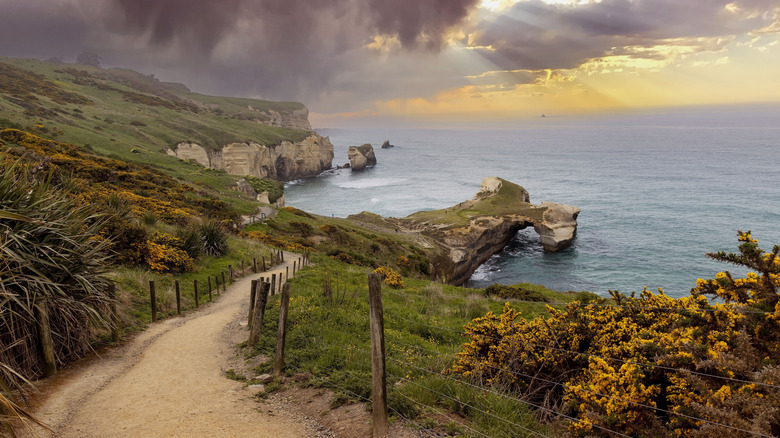Discovering the Hidden Beauty of the Catlins
New Zealand, known for its breathtaking landscapes and natural wonders, has become a popular destination for travelers around the world. Despite the surge in tourism over the past two decades, there are still remote and untouched regions that offer a unique experience. One such area is the Catlins, located in the far southern part of the South Island. This region is a treasure trove of waterfalls, rugged coastlines, ancient forests, and rare wildlife. The best way to explore this hidden gem is by taking the Catlin Coastal Heritage Trail (CCHT).
The CCHT is an offshoot of the more famous Southlands Scenic Route, providing visitors with a chance to discover a magical corner of New Zealand. While the trail is only 70 km long, it features 13 stops that require at least five hours of exploration. The journey is well worth the time, as the Catlins offer some of the most stunning scenery in the country.
Getting to the CCHT requires a bit of an adventure. Travelers can start their journey from either Christchurch or Wellington, flying into Dunedin before renting a car or camper van. From there, they can follow the Southlands Scenic Route south for about two and a half hours until reaching the town of Niagara. This marks the beginning of the Catlins adventure.
Tolong support kita ya,
Cukup klik ini aja: https://indonesiacrowd.com/support-bonus/
Exploring the Wonders of the Catlins
Starting at Niagara, visitors will encounter a small but charming waterfall. The name of this waterfall was chosen with a sense of humor, as it was named after the famous Niagara Falls in New York. Although not as grand, it adds a touch of local charm to the journey. As travelers drive along the southern coast, they will be surrounded by the beauty of the native Māori land. A stop at the Waikawa Museum offers insight into the lives of the indigenous people and the European settlers who arrived in the late 19th century.
Further down the trail, travelers will come across several ports, inlets, and coves. One notable location is Porpoise Bay, where visitors can spot Hector’s dolphins. These dolphins are unique to the southern coast of New Zealand and are easily identified by the black strap on their back. Another highlight is Curio Bay, home to a petrified forest that dates back over 160 million years. Here, visitors can see tree stumps and fern imprints from the Jurassic Period. The Tumu Toka Curioscape provides an interactive experience that brings this ancient history to life.
Landmarks and Historical Significance
As the trail continues, travelers will reach Slope Point, the most southerly point on the South Island. The name is believed to refer to the sloping topography that faces the sea. Access to this location is limited during certain times of the year, specifically from September to November, due to lambing season. However, July is considered one of the best months to visit New Zealand, making it an ideal time to explore this unique landmark.
Another significant site on the trail is the Waipapa Point Lighthouse, located in the Waipapa Reservation Area. This lighthouse overlooks the Waipapa Reef and stands as a reminder of a tragic event in 1881 when the SS Tararua sank, resulting in 131 lives lost. The lighthouse was built three years later and remains operational today. Visitors can take a walk through the reservation area, reading informative plaques that tell the story of this historical site.
A Journey Worth Taking
Thanks to the proximity of these attractions, it is possible to see all the highlights of the Catlins in a single day. Taking the time to explore each stop allows visitors to fully appreciate the heritage and natural beauty that make the Catlins Coastal Heritage Trail so special. Whether it’s the unique wildlife, ancient forests, or historical landmarks, the Catlins offer a truly unforgettable experience.







